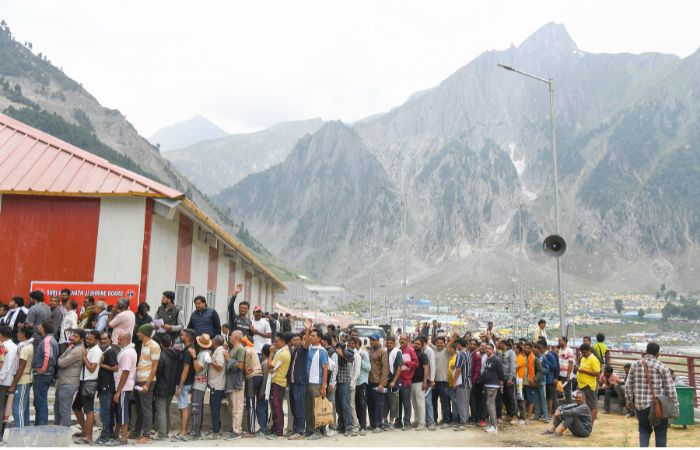The number of Gujarati pilgrims heading for the Amarnath Yatra has dropped this year, with only about 5,000 expected to take part. This marks a decline of over 8%, as many travel-loving devotees appear to be more cautious.
The annual Amarnath Yatra begins on Thursday, July 3, and will continue for 38 days until August 9. The sacred shrine, located in Anantnag district of Jammu & Kashmir at an altitude of 3,880 metres, lies in a region known for harsh weather and difficult terrain. The yatra starts from the Bhagwati Nagar base camp.
Safety Concerns Following Pahalgam Attack
While 3.5 lakh pilgrims had initially registered for this year’s yatra, the numbers plummeted to 85,000 following the April 22 terror attack in Pahalgam, which claimed the lives of 26 tourists. This incident has notably impacted participation, particularly among Gujarati pilgrims.
No Helicopter Services This Year
Adding to the challenges, helicopter services will not be available this year, meaning all pilgrims must undertake the entire journey on foot. This change has deterred many elderly or physically unfit devotees.
Health Clearance Numbers Drop Sharply
Dr Rakesh Joshi, Superintendent of Ahmedabad Civil Hospital, noted the steady drop in pilgrims obtaining health certificates for the yatra.
- In 2023, 455 pilgrims were issued certificates
- In 2024, the number dipped to 430
- In 2025, only 234 pilgrims have come forward for certification
Travel Agents See Slump in Demand
Travel agencies have also reported a drastic fall in interest. “Earlier, we used to get 50 inquiries a day. This year, it’s barely 1–2,” said a tour operator.
Many from the upper middle class are now preferring the Kailash Mansarovar Yatra, seen as a more exclusive spiritual experience. Tour packages for the 14-day trip start at ₹2.5 lakh.
Yatra Guidelines Emphasize Fitness
The official Amarnath Shrine Board website stresses the need for physical preparedness, advising pilgrims to begin fitness training at least a month in advance. Daily walks of 4–5 km, along with yoga, deep breathing, and pranayam, are recommended to build endurance for the high-altitude trek.



